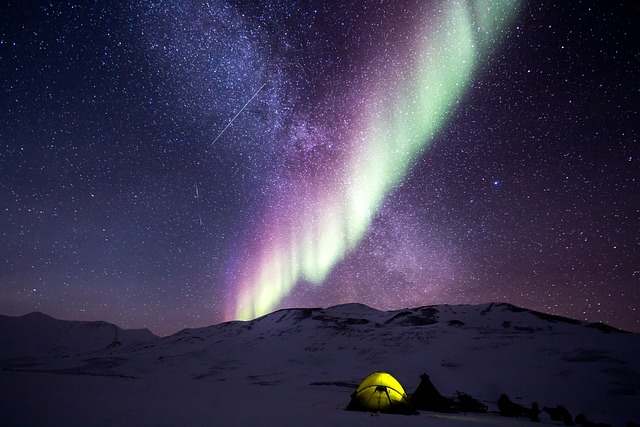Enjoying Camping
Camping is an adventure that allows us to disconnect from the digital world and reconnect with nature. Whether you're a seasoned camper or a novice, each camping trip offers a canvas for new experiences. With the right ideas and preparation, camping can be transformed from a simple night under the stars into an unforgettable outdoor escapade. Let’s delve into some camping ideas that can cater to a range of preferences and styles.
Types of Camping
Traditional Tent Camping
The classic camping experience involves pitching a tent at a campsite. This form can range from backcountry camping, where you hike to a remote location, to family-friendly campsites with amenities like running water and restroom facilities.
RV Camping
For those who prefer to bring the comforts of home on the road, RV camping is ideal. It provides a balance between experiencing the great outdoors and having modern conveniences at your fingertips.
Backpacking
This more rugged form of camping involves carrying all your gear in a backpack and trekking to campsites. It’s perfect for those looking for solitude and a challenge.
Glamping
Short for “glamorous camping,” glamping offers luxury in the wilderness. You can find glamping sites with furnished tents, beds, and sometimes even air conditioning and heating.
Survivalist Camping
For the ultimate outdoors person, survivalist camping strips the experience down to the basics. The goal is to rely on your skills to live off the land with minimal resources.
Selecting a Campsite
National Parks
National parks offer some of the most scenic campsites. Research beforehand for permits and rules, as these sites are often in protected environments.
State Parks and Campgrounds
Usually more accessible and with more amenities than national parks, state parks, and campgrounds are great for families and less experienced campers.
Dispersed Camping
For a free and secluded experience, consider dispersed camping on public lands, typically outside of designated campgrounds. Be sure to follow Leave No Trace principles.
Private Campgrounds
These can range from basic to resort-like with amenities such as swimming pools, camp stores, and organized activities.
Camping Gear Essentials
Shelter and Bedding
- Tent with a footprint and rainfly
- Sleeping bags appropriate for the season
- Sleeping pads or air mattresses
- Camping pillow
Cooking and Food Storage
- Portable stove or grill
- Coolers/ice chests
- Food storage containers to protect against wildlife
- Cooking utensils and dishware
Clothing and Footwear
- Weather-appropriate clothing (layering is key)
- Sturdy footwear
- Rain gear
- Hats and gloves for cooler weather
Safety and Navigation
- First aid kit
- Map and compass/GPS
- Multi-tool or knife
- Headlamp or flashlight with extra batteries
Personal Items
- Toiletries and personal hygiene products
- Sunscreen and insect repellent
- Towels and biodegradable soap
Campsite Setup
Tent Placement
Choose a flat, elevated area for your tent to avoid water pooling if it rains. Clear the ground of debris before setting up.
Fire Safety
If campfires are allowed, use established fire rings, and never leave a fire unattended. Fully extinguish your fire before leaving the campsite or going to sleep.
Food Storage
Proper food storage is critical to avoid attracting wildlife. Use bear-proof containers or hang your food from a tree if required.
Camping Activities
Hiking and Exploration
Research nearby trails and plan hikes that fit your group's ability level.
Water Activities
If you’re near a body of water, consider bringing kayaks, canoes, or stand-up paddleboards.
Fishing
Many campsites are near rivers or lakes where you can fish. Be sure to check for any required fishing licenses.
Wildlife Watching
Bring binoculars and guidebooks to observe and identify local wildlife and plants.
Campfire Stories and Games
Prepare a list of stories to tell or games to play around the campfire.
Stargazing
Take advantage of being away from city lights to gaze at the stars. Apps can help identify constellations and planets.
Meal Planning
Pre-Trip Preparation
Prep meals as much as possible at home. Marinate meats and chop vegetables to save time and reduce waste at the campsite.
Simple and Hearty Recipes
Plan for easy meals that don’t require complicated preparations. One-pot dishes like chili or stew are perfect for camping.
Campfire Cooking
Utilize the campfire for cooking. Beyond roasting marshmallows, you can cook meals in foil packets or on a grill grate.
Snacks and Hydration
Bring plenty of snacks for energy while hiking and exploring. Always have ample water and a way to purify natural water sources.
Environmental Consideration
Leave No Trace
Adhere to Leave No Trace principles to minimize your impact on the environment.
Sustainable Practices
Use rechargeable batteries, solar chargers, and avoid single
-use plastics to keep your camping sustainable.
Wildlife Respect
Keep a safe distance from animals and do not feed them. Respect their habitat.
Conclusion
Camping is a versatile activity that can adapt to your preferred style of adventure. Whether opting for a weekend getaway in a national park or an extended backpacking trip, the essence of camping lies in embracing the simplicity and beauty of the outdoors. It’s a chance to unwind, challenge yourself, build relationships, and make memories that last a lifetime. By preparing appropriately, respecting nature, and maintaining an open mind, you can transform any camping trip into a rewarding experience that celebrates the great outdoors.

